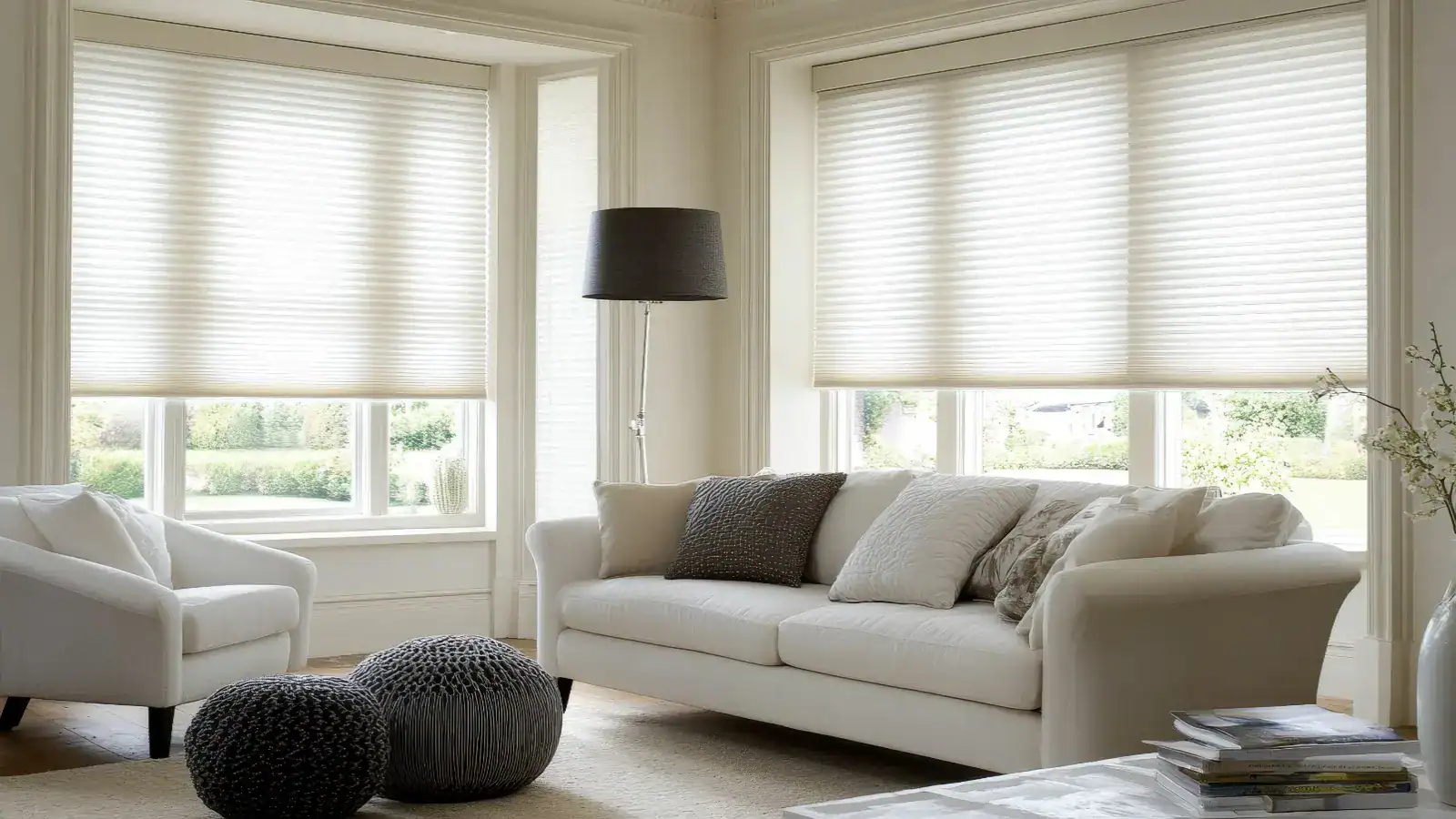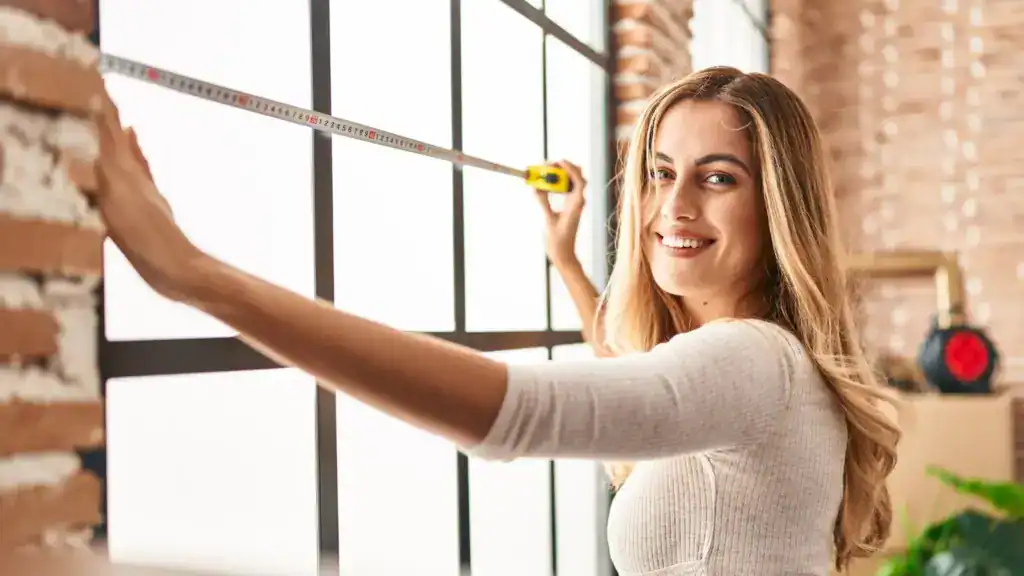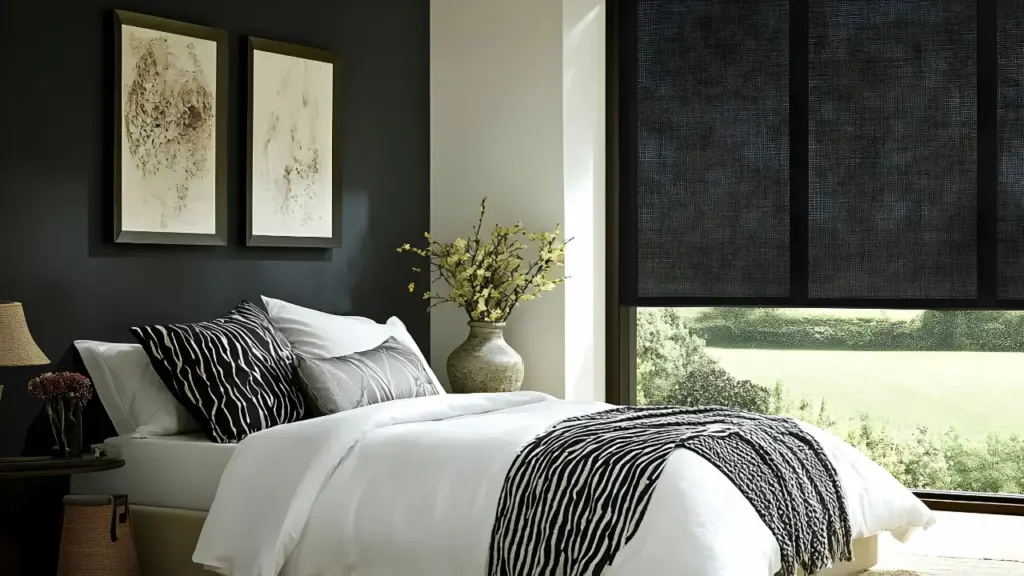How to Clean Pleated Fabric Window Shades: A Step-by-Step Guide

Corrugated airplanes were popular in the 1930s. They were strong but labor-intensive to maintain compared to aircraft with smooth skin.
- Corrugation dramatically increased the total surface area, meaning more material to clean.
- Dirt, oil, dust, and grime could settle in the grooves, making it harder to scrub or wipe clean.
- Technicians often needed small brushes or cloths to reach into the corrugations.
- The grooves could trap water and cleaning solvents.
- Thorough drying was slow and difficult.
Does this sound like the struggles with your cellular shades?
Read for our heartfelt commiseration and tips to make the job easier.
Understanding Pleated Fabric Shades
Pleated fabric window shades come in several styles, each with distinct cleaning requirements:
- Cellular (honeycomb) shades feature a honeycomb structure that creates insulating air pockets. The cells can be single, double, or triple-layered.
- Traditional pleated shades are made from a single layer of fabric folded into accordion-style pleats.
- Roman shades have fabric panels that fold horizontally when raised, creating soft pleats.
- Balloon shades gather into puffy, balloon-like folds when raised.
The fabrics vary widely, from synthetic polyester and cotton blends to natural fibers like linen or silk. Some shades feature special coatings for light filtering, blackout capabilities, or stain resistance.
Why Pleated Fabric Shades Are Harder to Clean
Pleated fabric shades present several cleaning challenges that flat window treatments don’t:
- Complex Geometry: The folds and pleats create numerous surfaces and crevices where dust accumulates. A standard vacuum attachment can’t reach all areas effectively.
- Delicate Fabrics: Many pleated shades use lightweight fabrics that can tear, stretch, or lose their shape when handled roughly.
- Static Buildup: Synthetic fabrics attract and hold dust through static electricity.
- Moisture Sensitivity: Getting fabric shades too wet can cause shrinkage, warping, or water stains. Some fabrics may lose their pleating structure when soaked.
- Hardware Integration: The pleating mechanism and cords are integrated with the fabric, making thorough cleaning more complex than with separate components.
How Often Should You Clean Pleated Shades?
- Light Cleaning (Weekly): Use a feather duster or vacuum brush attachment to remove surface dust. This prevents buildup that becomes harder to remove later.
- Medium Cleaning (Monthly): Vacuum thoroughly using the techniques outlined below. Check for spots or stains that need immediate attention.
- Deep Cleaning (Every 3-6 Months): Perform a comprehensive cleaning using the methods described in this guide. Homes with pets, smokers, or high dust levels may need more frequent deep cleaning.
- Annual Professional Cleaning: Consider professional cleaning for expensive or delicate shades, especially those made from natural fibers or with complex mechanisms.
Cleaning Tools & Supplies
- Vacuum cleaner with brush attachment
- Soft-bristled brush (old toothbrush works well)
- Microfiber cloths
- Mild detergent or specialized fabric cleaner
- Spray bottle
- Hair dryer (for drying)
- Lint roller
- White vinegar (for odor removal)
- Compressed air canister (optional)
Step-by-Step Cleaning Process
Step 1: Assessment & Preparation
- Close the shades completely to access the full surface area. If available, check the manufacturer’s care label—some shades have specific cleaning restrictions.
- Remove loose debris by gently shaking the shades or using a feather duster for a light pass.
Step 2: Thorough Vacuuming
- Set your vacuum to the lowest suction setting to avoid damaging delicate fabrics.
- Starting from the top, work the brush attachment along each pleat. Move slowly and methodically, covering the front and back surfaces.
- For cellular shades, vacuum the cells individually. The brush attachment should fit into most standard honeycomb openings.
- Pay special attention to the bottom rail and side channels, where dust accumulates.
Step 3: Spot Cleaning Stains
- Mix a small amount of mild detergent with water in a spray bottle. Test the solution on an inconspicuous area first.
- Spray stained areas lightly — don’t soak the fabric. Blot gently with a clean microfiber cloth, working from outside the stain toward the center.
- For grease stains, try a small amount of dish soap. For organic stains like food or blood, use cold water to prevent them from setting.
Step 4: Deep Cleaning (When Necessary)
For heavily soiled shades that can’t be cleaned with spot treatments:
- Remove the shades according to the manufacturer’s instructions. Most pleated shades lift out of their mounting brackets easily.
- Fill a bathtub with lukewarm water and add a small amount of mild detergent.
- Submerge the shades gently, avoiding aggressive scrubbing that could damage the pleating mechanism.
- Let them soak for 10–15 minutes, then rinse thoroughly with clean water.
Step 5: Drying Process
Proper drying prevents water damage and maintains the shade’s shape:
- Gently shake excess water from the shades.
- Lay the shades flat on clean towels, or hang them in a well-ventilated area away from direct sunlight.
- Use a hair dryer on a cool setting to speed drying, focusing on the pleating mechanism and any thick areas.
- Ensure shades are completely dry before reinstalling to prevent mold or mildew.
Step 6: Final Touches & Reinstallation
- Once dry, vacuum the shades a final time to remove lint or debris picked up during cleaning.
- Use a lint roller on fabric surfaces for a polished finish.
- Reinstall the shades and test their operation to ensure the cleaning process didn’t affect the mechanism.
Dealing with Stubborn Cleaning Challenges
Persistent Odors
Mix equal parts white vinegar and water in a spray bottle. Mist lightly over the fabric and allow to air dry. The vinegar smell will dissipate, taking other odors with it.
Pet Hair Removal
Use a lint roller or slightly damp rubber gloves to collect pet hair from fabric surfaces. Work systematically across each pleat.
Smoke Residue
Smoke residue requires more aggressive treatment. Use warm water and dish soap, followed by a vinegar rinse. Multiple treatments may be necessary.
Grease Stains
Apply a small amount of cornstarch to fresh grease stains and let them sit for several hours before vacuuming. Then, follow with dish soap for spot cleaning.
When to Call Professionals
Some situations require professional cleaning services:
- Expensive natural fiber shades (silk, linen, wool)
- Antique or irreplaceable window treatments
- Extensive water damage or flooding
- Stubborn stains that don’t respond to home treatment
- Shades with complex motorized mechanisms
Professional cleaners have specialized equipment and expertise to handle delicate fabrics without damaging them.
Maintenance Tips to Extend Shade Life
- Weekly light dusting prevents heavy buildup that’s harder to remove.
- Raise and lower shades gently to avoid stressing the fabric and mechanism.
- Consider UV-filtering window film to prevent fabric fading and deterioration.
- Maintain consistent indoor humidity to prevent fabric warping or shrinkage.
- Address spills and stains immediately before they set permanently.
Making Cleaning Easier: Prevention Strategies
- Purchase door mats and air purifiers to reduce airborne particles entering your home.
- Keep windows closed during high pollen or dust storms.
- Make regular HVAC filter changes to reduce circulating dust that settles on shades.
- Treat fabric shades with commercial fabric protectors that repel dust and stains.
FAQs: Cleaning Pleated Shades
Q: Can I put pleated fabric shades in the washing machine?
Most pleated fabric shades shouldn’t be washed in a washing machine. The agitation can damage the pleating mechanism and distort fabric.
Q: How do I remove wrinkles from pleated shades after cleaning?
Use a handheld steamer on low heat, keeping it several inches from the fabric. Never use a direct iron, which can melt synthetic materials or leave permanent marks.
Q: What’s the best way to clean cellular shade cells I can’t reach?
Blow the dust out of deep cells with compressed air, followed by a vacuum with a crevice tool attachment. Some cellular shades can be gently stretched to open the cells wider for cleaning.
Q: Can I use bleach on white pleated shades?
Avoid chlorine bleach, which can weaken fabrics and damage pleating mechanisms. Use oxygen bleach sparingly if needed, and test on an inconspicuous area first.
Q: How do I clean motorized pleated shades?
Remove the motor unit according to the manufacturer’s instructions before wet cleaning. Clean the fabric portion using the same methods as manual shades.
Q: Why do my shades still look dusty after vacuuming?
Static electricity in synthetic fabrics can make dust cling despite vacuuming. To reduce static, lightly apply a fabric softener sheet to the surface, then vacuum again.
Q: Is it safe to use steam cleaners on pleated fabric shades?
No. Moisture, heat, and steam can cause shrinkage and damage to the adhesives in the pleating mechanism.
Q: How can I tell if my shades need professional cleaning?
Call the pros if home methods don’t remove stains, if fabrics are valuable or delicate, or if you notice persistent odors after a thorough cleaning.


